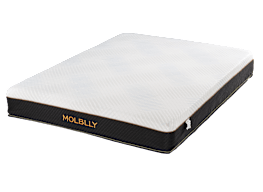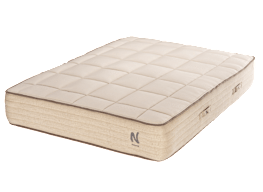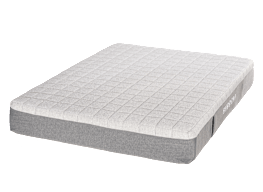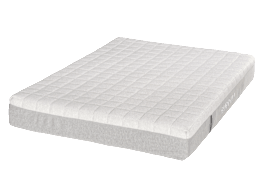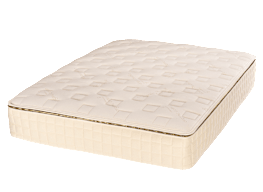Best Mattresses of 2023
Our rigorous lab tests cut through the hype and zero in on the adjustable air, innerspring, and foam mattresses that are truly worth your consideration
When you shop through retailer links on our site, we may earn affiliate commissions. 100% of the fees we collect are used to support our nonprofit mission. Learn more.

We spend nearly a third of our lives in bed—assuming, of course, that we’re getting a minimum of 7 hours of sleep a night. So it’s important to find the best mattress for your sleep position and body type—one that offers good support while also providing the pressure relief that feels most comfortable.
Once you start shopping for a new bed, however, you’ll notice that nearly every mattress on the market touts to be the best, or the most comfortable. And there are thousands out there. But "best" for others may not be the best for you, and "comfort" depends on a variety of factors and differs from individual to individual.
It’s easy to get bogged down in market-speak as you go about your search. But that’s where Consumer Reports’ testing and surveys can clear the way. We evaluate the three most common types: adjustable air, innerspring (including the foam-on-coil hybrid mattresses), and foam mattresses (including latex and memory foam). Whether they’re established brands (such as Beautyrest, Sleep Number, Tempur-Pedic) or popular online players (like Casper, Leesa, Tuft & Needle), we purchase each mattress at retail and put it through a series of rigorous lab tests.
How We Pick the Best Mattresses
It’s almost impossible to zero in on the best mattress for a particular person. Whether it feels comfortable and just firm or soft enough depends on personal preference. For the best outcome, you need to lie on the mattress and assess it for yourself (we explain how best to do that in our mattress buying guide). What’s "best" for you is largely subjective.
How Consumer Reports Tests Mattresses
Support and firmness level are key measures of comfort—so we’ve devised a protocol to consistently evaluate both. With the help of human testers, we calculate precisely how much support each mattress provides to people of different sizes and different sleep positions. As for firmness, we use an objective industry test standard that entails applying a load of up to 1,000 newtons (4.4 newtons is equal to about a pound) to each mattress and measuring the surface displacement. We then plot the results on a scale of 1 to 10 so that we can accurately compare the firmness of one mattress with that of another.
Our stabilization test evaluates how easily sleepers can shift their weight without disturbing a partner—if you wake up easily when a partner rolls over, you should consider mattresses that rate highly for stabilization. We also test whether a mattress retains heat (hot sleepers should avoid those that do) and how well the mattress keeps its shape over time. For that last test, we pass a nearly 309-pound roller over each mattress 30,000 times to simulate the typical life span of eight to 10 years.
And while our scientific ratings should provide a good idea as to how happy you might be with a particular mattress, we also post ratings for comfort and satisfaction. These ratings are based on data from recent surveys on CR members’ experiences with almost 67,000 mattresses purchased within the past decade. We asked them to rate the comfort of their mattress and used the data to generate ratings by brand and type of mattress (but not the actual model of the mattress). Owner satisfaction is based on a member’s overall judgment of factors such as firmness/softness, value, quality of sleep, and more.
How Much Should You Spend on a Mattress?
You may be wondering whether pricier always means better. CR’s tests say no—spending more won’t necessarily get you a better night’s sleep. Though the top mattresses in our ratings range from $750 to $3,300, there are a number of budget mattresses that don’t fall far behind the top of the pack. Here’s what our tests found in each price category:
- Less than $600: A number of budget mattresses in our ratings earn high marks for durability and stabilization. A few even do well in our support tests, though most earn middling marks. Most of these budget mattresses consist of just one or two layers (so don’t expect much of a nuanced feel).
- Between $600 and $1,000: These beds tend to do better than cheaper models in support tests. You’ll often start to see more layers in this category.
- Between $1,001 and $2,500: These mattresses tend to include higher-quality materials than lower-priced mattresses do, and often have more layers. The best mattresses in this pricing category excel when it comes to support. It’s not unusual to find thicknesses of more than 12 inches in this category.
- Above $2,500: All of the adjustable air mattresses in CR’s ratings fall into this group, along with a number of luxury innerspring and foam mattresses. Beds at this price often ace our support tests. They also offer a bit more customization, more comfort layers, and extra touches (such as tufting, pillow tops, and handles).
We recently added 19 more mattresses to our ratings chart, including the Avocado Eco, the brand’s most affordable organic offering, and the Plank Firm Luxe, designed by Brooklyn Bedding for firm-mattress lovers (though our tests found it wasn’t as firm as you’d expect). That brings us to a current total of 230 mattresses that have been rigorously reviewed in our labs. And while the new additions each might address the needs of some sleepers, our previous highest overall scorers still remain at the top of the heap. CR members can read on for more information about these recommended mattresses in our roundup, below.
To find out more about how to shop for a mattress, check out our mattress buying guide. CR members can also use our interactive mattress selector, where your responses to a few key questions will generate a selection of some of the best mattresses for your needs. To learn about more options (including the Eco and Plank), check out our comprehensive mattress ratings, where you can filter for price, firmness levels, and other features that are important to you.
Best Mattresses: Adjustable Air
You can inflate these mattresses to your desired firmness level using a remote control or smartphone app. If you’re sleeping with a partner, each of you can select a preferred firmness for your side of the bed.
Best Mattresses: Innerspring
The most widely sold mattresses, these options are composed of steel coils topped with layers of cushioning—made with either fiber-filled padding or (in the case of so-called hybrid mattresses) foam. They’re typically a better choice than foam mattresses if you prefer a bit of bounce.
Best Mattresses: Foam
These mattresses consist entirely of foam layers, with many popular brands shipping them in a box directly to consumers. Latex foam mattresses have a somewhat springy feel to them; synthetic foam mattresses (memory foam in particular) tend to lack any resilience—you’ll feel as if you’re sleeping "in" the mattress as opposed to on top of it.
Tips for Buying a Mattress
Tossing and turning all night? Maybe it’s time for a new mattress. On the “Consumer 101” TV show, CR expert Chris Regan shares tips on what to look for when shopping.



















